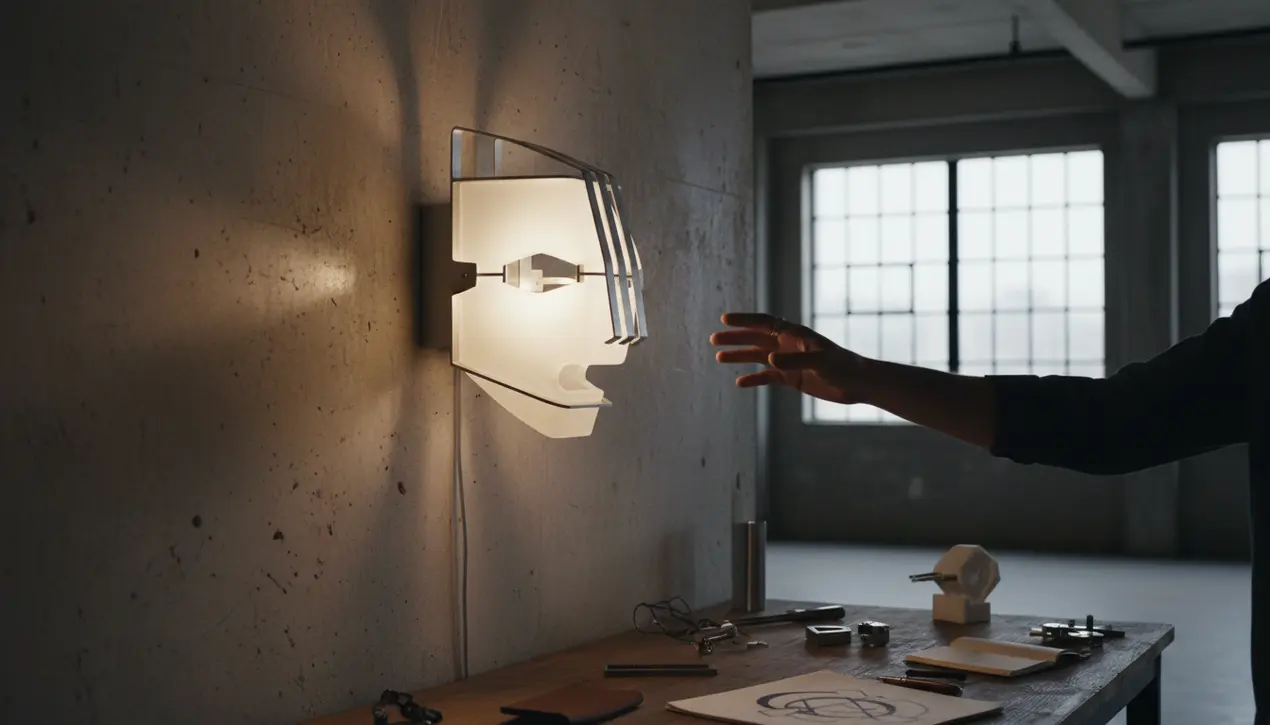
Entertainmenttheatre & artsArt Exhibitions
Philippe Tabet reimagines industrial bulkhead lamp as face-like lighting fixture.
SO
Sophia King
2 hours ago7 min read2 comments
In a delightful fusion of industrial design and playful anthropomorphism, Philippe Tabet’s QB1 lamp emerges not merely as a lighting fixture but as a character in the room, its aluminum cage meticulously crafted to suggest abstract facial features that engage the observer in a silent, luminous dialogue. This transformation of the utilitarian bulkhead lamp—a workhorse of warehouses and ship corridors—into an object of personality and wit represents a broader movement within design where functionality gracefully waltzes with emotional resonance, much like the way AI art tools such as Midjourney allow creators to infuse algorithmic outputs with human-like whimsy and narrative depth.Tabet’s approach feels akin to a digital artist tweaking generative parameters in a Figma plugin; he deconstructs the cold, metallic skeleton of industrial archetypes and reassembles it with a soul, where each strut and curve in the cage implies a brow, a gaze, or a smile, turning ambient lighting into a storytelling medium. The QB1 doesn’t just illuminate a space—it interacts with it, its face-like structure casting shadows that shift with perspective, inviting users to project emotions onto its form, a technique reminiscent of how interactive AI installations create dynamic user experiences that evolve through engagement.Historically, design movements from Art Deco’s streamlined geometries to Postmodernism’s ironic nods have flirted with human forms, but Tabet’s work leans into a contemporary zeitgeist where products are expected to possess identity, mirroring our desire for technology to feel less sterile and more relational, as seen in the empathetic interfaces of modern UX design. Expert commentators in the design sphere might draw parallels to Joe Colombo’s anthropomorphic appliances of the 1960s or even the emotive robots in speculative fiction, suggesting that Tabet is tapping into a deep-seated human tendency to anthropomorphize the inanimate, thereby enhancing user attachment and aesthetic pleasure.The implications stretch beyond mere decor; in commercial settings, such lighting could humanize minimalist interiors, while in residential spaces, it acts as a conversational centerpiece that blurs the line between art and utility, potentially influencing how future smart home devices incorporate form to foster emotional connectivity. As lighting design increasingly intersects with digital fabrication and custom algorithms, Tabet’s QB1 stands as a testament to the power of manual craftsmanship in an automated age, proving that even the most functional objects can be reimagined with a touch of humanity—a lesson for creators everywhere who wield both traditional tools and cutting-edge AI to sculpt not just products, but experiences that resonate on a profoundly personal level.
#designboom
#Philippe Tabet
#QB1 lamp
#lighting design
#industrial design
#face-like fixture
#featured
Stay Informed. Act Smarter.
Get weekly highlights, major headlines, and expert insights — then put your knowledge to work in our live prediction markets.
Comments
Loading comments...
© 2025 Outpoll Service LTD. All rights reserved.